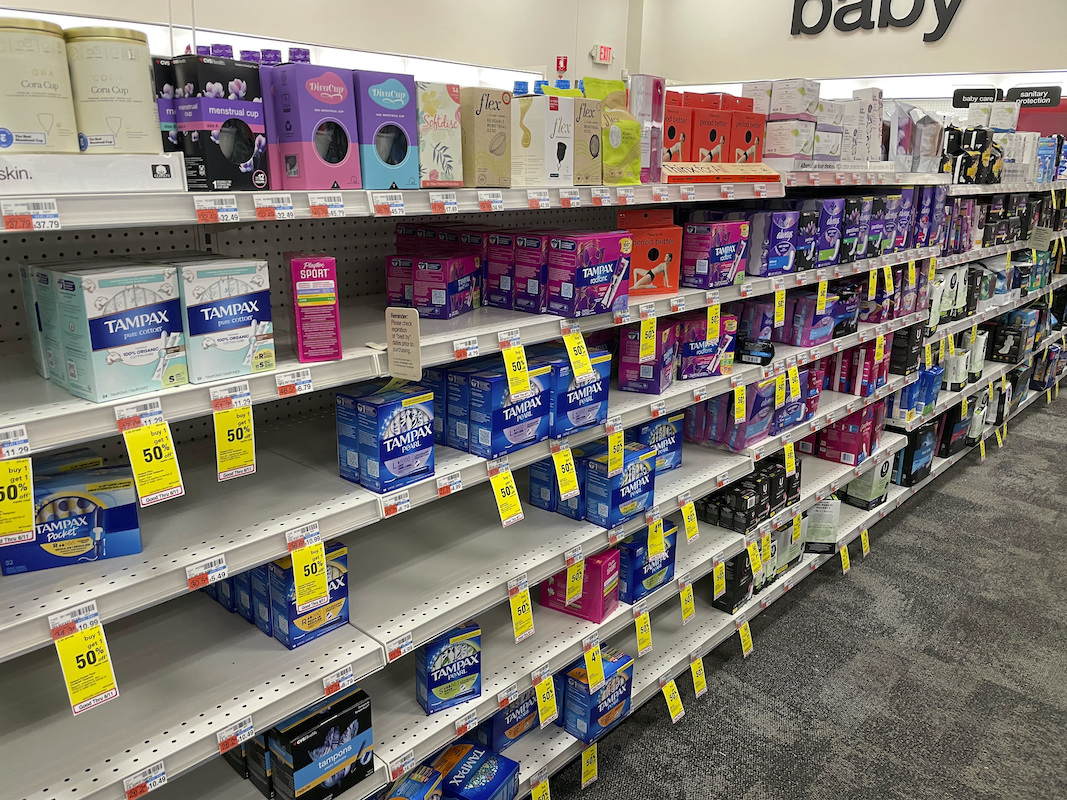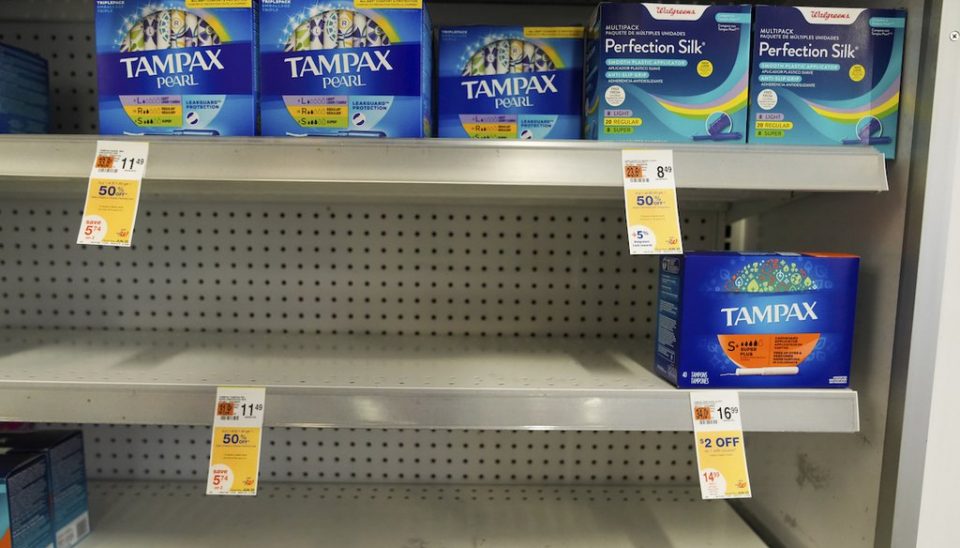In 2020, an Oregon-based nonprofit that works to supply free menstrual products to communities in need, distributed over 2 million tampons.
In 2021, it distributed over 1.5 million.
Halfway through 2022, the group, called PERIOD, has only been able to send out 200,000 tampons, according to Kate Barker Swindell, the nonprofit’s service and operations manager. The group distributes supplies to schools, religious organizations, food banks and other locations, but its efforts are being hampered by an ongoing tampon shortage in the U.S.
While the shortage is sure to have an impact on women in general, experts said those who already struggle to access effective menstrual products due to price and other conditions will be most affected.
People in search of tampons began noticing empty shelves back in April and sharing their struggles online. The issue has recently also drawn headlines from mainstream news outlets and caught the attention of elected officials.
Amid increasing awareness and fears about the shortage, Rep. Marjorie Taylor Greene, R-Ga., has repeatedly and baselessly claimed transgender men are to blame, the latest in a number of transphopic remarks the lawmaker has made, including once suggesting that use of violence against trans people would be appropriate.
“Now there’s a shortage of tampons, and that’s probably because men are buying tampons,” Greene said in a June 13 interview with Brian Glenn, adding, “They put tampons in men’s bathrooms.”
She echoed similar sentiments that evening on Twitter when she shared an NPR story about the shortage mocking its use of the phrase “people who menstruate” and advised people looking for tampons to check “some men’s restrooms” because “apparently they are available there.” On June 15 Greene tweeted a video of someone sarcastically praising the availability of menstrual products in what he suggests is a men’s restroom. Greene wrote: “Women can’t find tampons on store shelves, but men find tampons in their bathrooms.”
Trans people are not causing the tampon shortage, however. It’s also not due to efforts to increase access to menstrual products, including in men’s public restrooms.
“It’s true that there are trans people who menstruate, and it’s true that they’ve always been using menstrual products, so that’s not really the cause of a shortage at this moment,” said Jennifer Weiss-Wolf, a Women and Democracy Fellow at the Brennan Center for Justice. “They’re not all being hidden in some men’s room and that’s why there’s a shortage for everybody else. That’s just absurd.”
So, no, tampons aren’t being squirreled away in restrooms. The real reasons behind the tampon shortage are related to ongoing supply chain issues and materials shortages.

Supply chain issues are causing a tampon shortage in stores across the country. Tampons and other menstrual products are seen on June 11, 2022 at a local CVS store in Scarsdale, New York. (via the AP)
Supply chain volatility and cotton shortages
Tampons are a commonly used menstrual product made of absorbent cotton or rayon fibers. Often sold with a plastic or cardboard applicator, tampons are single-use and designed to absorb menstrual flow.
Shortages of materials used in tampons are a reason why people are seeing empty shelves at stores, said Patrick Penfield, a professor of supply chain practice at Syracuse University.
Continued supply chain volatility due to the COVID-19 pandemic is also driving the current shortage, said Pricie Hanna, who co-founded Price Hanna Consultants, a firm that specializes in raw materials and supply chain trends for nonwoven and hygiene absorbent products such as tampons.
This volatility includes international factors such as coronavirus lockdowns in China that slowed both manufacturing and the movement of goods — and domestic transportation issues.
“Truckers, we don’t have enough of them in the U.S.,” Hanna said. “Even if we get raw materials in or finished product into the U.S. market, we have to get them to the retailers.”
The U.S. is also not growing enough cotton to meet demand, Penfield said. High-demand medical products such as face masks require cotton, and China has been importing more cotton from the U.S. than ever before, he said. Need for plastic also exceeds supply, Penfield said. And when the materials are available, it often takes a long time to get them to tampon manufacturers.
There aren’t many manufacturing facilities that make tampons in the U.S., so that’s factoring into the shortage as well, experts said.
Hanna said the most recent COVID-19 shutdowns in China have demonstrated the need to manufacture more materials domestically, such as rayon. “But it’s not so easy to build a big rayon plant,” she said.
The situation is further complicated because tampons are regulated as a Class II medical device, meaning manufacturers are required to provide data about the safety of their tampons and applicators to the Food and Drug Administration.
“You need to get approval if you make a material change in the raw materials that are used. … Because you wear them inside the body, it’s highly regulated,” Hanna said.
Hanna and Penfield said the news of the shortage will likely cause people to overbuy and stockpile tampons — inevitably making the problem worse. In addition, Hanna said demand for tampons typically increases in the summer months, due to activities like swimming that render products like pads impractical.
Edgewell, a manufacturer of tampons, told PolitiFact that it has operated continuously throughout the pandemic, but two separate omicron surges — one in the U.S. in late 2021 and another in Canada in early 2022 — caused workforce shortages that slowed production. Edgewell said it expects inventory should return to normal levels in the coming weeks.
P&G, another manufacturer of menstrual products, did not address specific causes for the shortage, but said production continues and it expects the shortage to be temporary.
People seeking alternatives to tampons can turn to pads (disposable and reusable), menstrual cups and period underwear — and there are no current signs of a shortage of these products.
PolitiFact researcher Caryn Baird contributed to this report.


